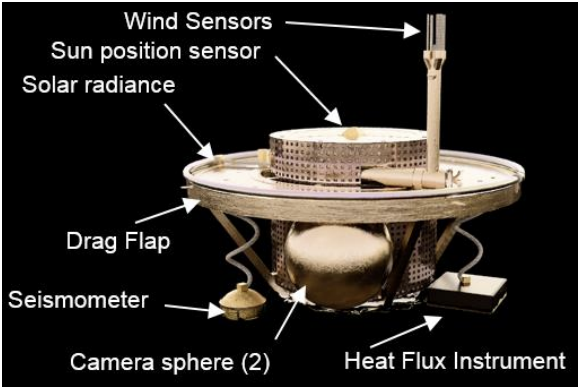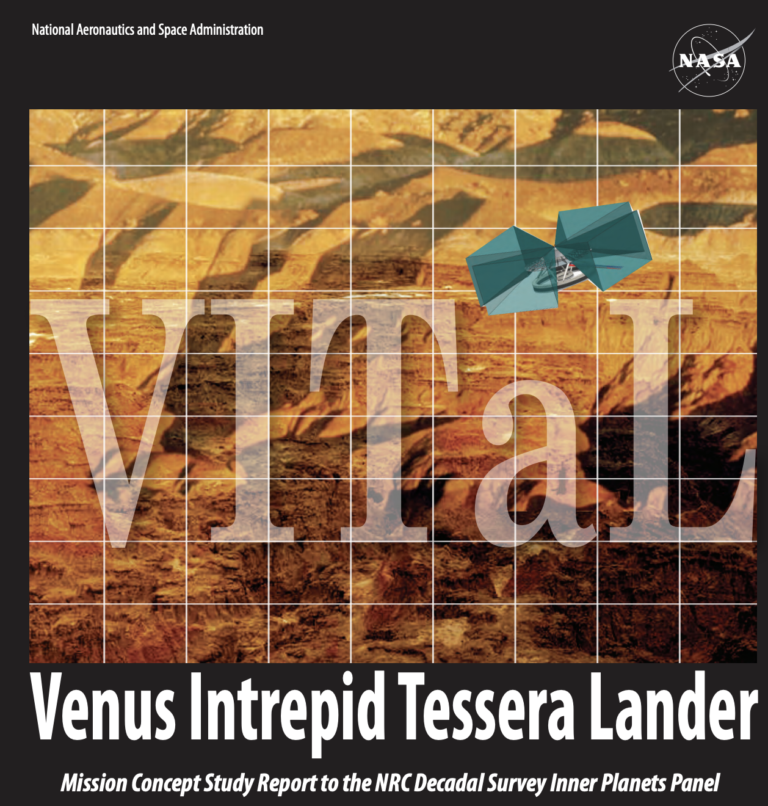Spacecraft are our tools to learn about how planets work. Prof Gilmore has contributed to several mission and instrument concepts.
VERITAS – Venus Emissivity, Radio Science, InSAR, Topography & Spectroscopy
Role: Co-I
From NASA: VERITAS will map Venus’ surface to determine the planet’s geologic history and understand why Venus developed so differently than the Earth. Synthetic aperture radar images, topography and infrared emission data will measure surface morphology and composition and confirm whether Venus is geologically active. Suzanne Smrekar of NASA’s Jet Propulsion Laboratory (JPL) is the principal investigator.
DAVINCI Deep Atmosphere Venus Investigation of Noble gases, Chemistry and Imaging)
Role: Co-I
From NASA: DAVINCI will analyze Venus’ atmosphere to understand how it formed, evolved and determine whether Venus ever had an ocean. DAVINCI plunges through Venus’ atmosphere to precisely measure its composition down to the surface. The instruments are encapsulated within a purpose-built descent sphere to protect them from the intense environment of Venus. The mission includes cameras on the descent sphere and orbiter designed to map surface composition. The last U.S.-led, in-situ mission to Venus was in 1978. The results from DAVINCI have the potential to reshape our understanding of terrestrial planet formation in our solar system and beyond. James Garvin of NASA’s Goddard Space Flight Center is the principal investigator. .
2021 Venus Surface Platform Study
Role: Study Team Lead
There are important questions about Venus that can only be answered via in situ surface operations, both short and long durations. The Venus Surface Platform Study is to understand capabilities required to achieve desired Venus interior-, surface-, and surface-atmosphere-related science and the technologies needed to enable those capabilities.
2020 Venus Flagship Mission Study
Role: PI
NASA funded several mission studies as input into the 2023 -2032 Planetary and Astrobiology Decadal Survey. The mission seeks to understand Venus whether Venus is or has ever been habitable. It would deliver 3 in situ assets: a 60-day variable altitude balloon that includes a life detection instrument, a 7 hour lander to make multiple chemical and the first mineralogical measurements of ancient tessera terrain and a 60 day long lived surface environmental station. These assets are supported by three orbiting spacecraft to examine the geology, atmosphere and space environment of Venus. A diverse science team joined with engineers at Goddard Space Flight Center to design the mission.
Role: Co-Lead
The Venus Bridge Focus Group was commissioned by NASA’s SMD Associate Administrator to examine what missions could be flown to Venus for $200M. The study identified numerous mission concepts to study multiple aspects of the Venus system with high science return.
2018 Seismic and Atmospheric Exploration of Venus (SAEVe)
Role: Science Team Member
Funded by NASA’s Planetary Science Deep Space SmallSat Studies Program, the SAEVe mission concept to deliver two landers to the surface of Venus and have them return high value science for 120 days, which is over three orders magnitude longer than anything previously achieved. Tibor Kremic of NASA’s Glenn Research Center is the lead investigator.
2010 Venus Intrepid Tessera Lander (VITaL)
Role: Co-Science Lead
The VITaL study was commissioned by the Decadal Survey and engineered at Goddard. The rugged lander design of this New Frontiers – class mission incorporates imaging and Raman/LIBS to make multiple measurements of mineralogy and chemistry of rocks exterior to the lander. A mass spectrometer will characterize atmosphere composition during descent.






